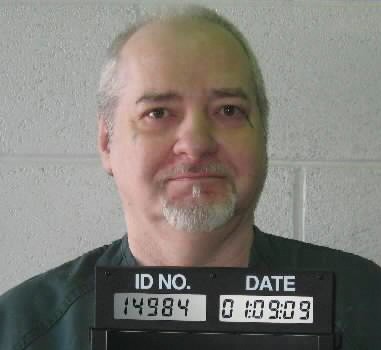(Headline USA) Idaho is set to execute Thomas Eugene Creech, an infamous serial killer, after housing him for nearly 50 years.
Barring any last-minute stay, the 73-year-old, one of the nation’s longest-serving death row inmates, will be executed by lethal injection for killing a fellow prisoner with a battery-filled sock in 1981.
Creech’s killing of David Jensen, a young, disabled man who was serving time for car theft, was his last in a broad path of destruction that saw Creech convicted of five murders in three states. He is also suspected of at least a half-dozen others.
Creech’s attorneys have filed a flurry of last-minute appeals in four different courts in recent months trying to halt the execution, which would be Idaho’s first in 12 years. They have argued Idaho’s refusal to say where its execution drug was obtained violates his rights and that he received ineffective assistance of counsel.
A three-judge panel of the 9th U.S. Circuit Court of Appeals on Friday rejected an argument that Creech should not be executed because he was sentenced by a judge rather than a jury.
It’s not clear how many people Creech, an Ohio native, killed before he was imprisoned in Idaho in 1974. At one point he claimed to have killed as many as 50 people, but many of the confessions were made under the influence of now discredited “truth serum” drugs and filled with tales of occult-driven human sacrifice and contract killings for a powerful motorcycle gang.
Official estimates vary, but authorities tend to focus on 11 deaths. Creech’s attorneys did not immediately return phone calls from The Associated Press.
In 1973, Creech was tried for the murder of 70-year-old Paul Schrader, a retiree who was stabbed to death in the Tucson, Arizona, motel where Creech was living. Creech used Schrader’s credit cards and vehicle to leave Tucson for Portland, Oregon. A jury acquitted him, but authorities say they have no doubt he was responsible.
The next year, Creech was committed to Oregon State Hospital for a few months. He earned a weekend pass and traveled to Sacramento, California, where he killed Vivian Grant Robinson at her home. Creech then used Robinson’s phone to let the hospital know he would return a day late. That crime went unsolved until Creech later confessed while in custody in Idaho; he wasn’t convicted until 1980.
After he was released from the Oregon State Hospital, Creech got a job at a church in Portland doing maintenance work. He had living quarters at the church, and it was there he shot and killed 22-year-old William Joseph Dean in 1974. Authorities believe he then fatally shot Sandra Jane Ramsamooj at the Salem grocery store where she worked.
Creech was finally arrested in November 1974. He and a girlfriend were hitchhiking in Idaho when they were picked up by two painters, Thomas Arnold and John Bradford. Creech shot both men to death and the girlfriend cooperated with authorities.
While in custody, Creech confessed to a number of other killings. Some appeared to be fabricated, but he provided information that led police to the bodies of Gordon Lee Stanton and Charles Thomas Miller near Las Vegas, and of Rick Stewart McKenzie, 22, near Baggs, Wyoming.
Creech initially was sentenced to death for killing the painters. But after the U.S. Supreme Court barred automatic death sentences in 1976, his sentence was converted to life in prison.
That changed after he killed Jensen, who was serving time for car theft. Jensen’s life hadn’t been easy: He suffered a nearly fatal gun injury as a teen that left him with serious disabilities including partial paralysis.
Jensen’s relatives opposed Creech’s bid for clemency. They described Jensen as a gentle soul and a prankster who loved hunting and spending time outdoors, who was “the peanut butter” to his sister’s jelly. His daughter, who was 4 when he was killed, spoke of how she never got to know him, and how unfair it was that Creech is still around when her father isn’t.
Adapted from reporting by the Associated Press

